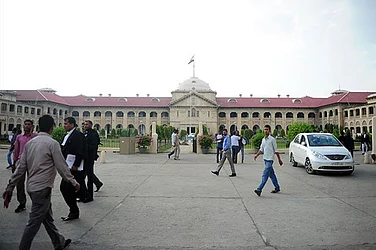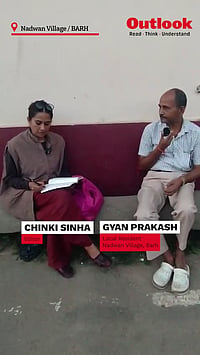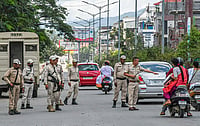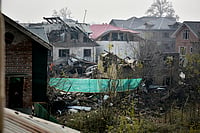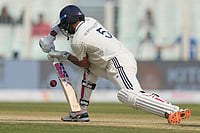IN February this year, S. Ajay Kumar, a food inspector with the ThiruvananthapuramCorporation, bought a kilo of goat liver from a local market. While it was being cooked,the liver gave off a strong odour of bleaching powder. His suspicion aroused, Kumar tasteda morsel. So did his daughter. Both were laid up for four days with diarrhoea andvomiting. Bleaching powder, he says, is commonly used to arrest the process of dehydrationin meat after slaughter, which leads to a loss in weight and results in a drop in profits.
Four years ago, Anil Agarwal, director of the Delhi-based Centre forScience and Environment, started seeing black spots. Doctors, suspecting a fungalinfection, advised an immediate operation, lest he turn blind. But Agarwal flew to the USfor a second opinion. Doctors diagnosed it as a rare kind of cancer, earlier cases ofwhich had been linked to pesticides. Agarwal returned home and did a study. Indians, hefound, had the highest levels of pesticide residues in their bodies. He is convinced thatwas how he got cancer.
Not just mustard oil. Beef, cereals, chicken, eggs, fish, fruits, milk,mutton, oil, pulses, spices, vegetables, water, you-name-it is being adulterated,contaminated, spiked under our very noses.
There is poison in our food. But all we can do is grin and gulp it."There are no natural deaths now. I am convinced every death is caused by theadulteration of food," says Dr T. Venkatesh of the St. John’s Medical College,Bangalore, with some finality.
There may be more than a touch of exaggeration in that claim. Thanks tothe average Indian body’s immunity—and the adulter-ant’s profitmotive—not all adulteration causes death. But it pretty much conveys the picture ofthe clinical nature in which unscrupulous traders and farmers, aided by lameduck food andmunicipal laws, are making a killing. And an ignorant, hapless nation, banking on morethan hope and immunity, is being left with no option but to consume.
No food item is beyond the pilferers’ ken. Sugar is adulteratedwith chalk powder. Supari with saccharin. Vinegar with mineral acid. Common salt withwhite powdered stone. Saffron with coloured tendrils of maize cob.Heeng with soap stone.Mustard seeds with ragi. Ghee with mashed potatoes. Chilli powder with brick powder. Blackpepper with papaya seeds. Dhania powder with sawdust. Coconut burfis with cancer-causingcolouring agents. And edible oils with mineral oils, castor oils and the flavour of themonth: Argemone mexicana.
AS The Indian Express commented at the height of the dropsy crisis: "That a mafiadealing in cooking oils could consciously, willfully, coldbloodedly put substances knownto be extremely toxic to human health, whether it be the oil of the Argemone mexicana,polybromides or plain motor oil, and sell the noxious mixture as ‘edible oil’,reflects how complete and total is the moral degeneration of the times. Their blind,unscrupulous pursuit of profit has led to widespread fear, panic and grief."
Sale of mustard oil has been banned in Delhi—and UP, Haryana, Himachal Pradesh,West Bengal, Bihar, Orissa, and the seven North-Eastern states. Delhi health ministerHarsh Vardhan has demanded death penalty for the guilty. Customers are even shunningvegetable and groundnut oils. Opportunistic retailers are cashing in, selling importedpal-molein oils. And the Hilsa fish, which is normally sold for Rs 140 a kg, is goingabegging at Rs 80 a kg, with Puja round the corner.
Not just mustard oil. Dropsy caught the nation’s fancy because itbegan in Delhi (September 5 toll: 44, indisposed 1,500). But while the capital feeds onthe conspiracy theories, in India that is Bharat, millions are eating and drinking very,very normal, seemingly harmless food items with scarcely any idea of the poison insidethem and what it is doing to them. And, possibly, to future generations of Indians.
Milk: Researchers at the National Institute of Nutrition,Hyderabad, found residues of oxytetracycline—antibiotics used to treat diseasedanimals which can cause hormonal imbalances—in 71 out of 97 individual buffalo milksamples.
Fruits and vegetables: Studies by the University of AgricultureSciences, Bangalore, showed high levels of toxic metals like lead, nickel, cadmium andchromium in vegetables, fruits and cereals sold in leading markets.High chromium intakecan damage kidneys.
Edible oil: A survey conducted by the National Dairy DevelopmentBoard in Rajkot and Bangalore markets found that 90 per cent of edible oils wereadulterated. Studies by the Defence Food Research Laboratory (DFRL), Mysore, found levelsof nickel higher than safety norms in some good brands of vanaspati oil.
Rice: A study conducted in Calcutta found grains were routinelysoaked in red oxide, which can cause chronic liver disease, to impart the reddish tintthat catches customers’ attention.
Dal: DFRL director Dr S.S. Arya says the armed forces have hadproblems with the adulteration of tur dal with kesar dal. Kesar dal has a substance calledBeta oxylallanin which causes nervous debility and paralysis.
Meat and fish: Copper sulphate, like bleaching powder, isroutinely used in Kerala to clot the blood of the animal to pre-empt weight-loss due tobleeding. Ammonium sulphate is coated on fish to create an impression of freshness.
Scientists at the Central Food Technological Research Institute(CFTRI), Mysore, estimate that the most common category of contamination is of unprocessedfood—fruits and vegetables, ice cream and cotton candy laced with various unpermittedcolours. They have several bacteria like Escherichia coli, Salmonella or Aspergillusflavus which produce toxins in the human body, and are perhaps the most common cause ofgastro-enteritis.
BUT Sudershan R.V. and Ramesh V. Bhatt of the National Institute of Nutrition (NIN),Hyderabad, say that in recent years, unscrupulous traders are using newer adulterants andcontaminants which are unlikely to be detected by analysts to hoodwink consumers. Theseinclude Turkish lentils sold as red-gram dal and Australian vetch sold as masur dal. Butpoison could be entering our bloodstreams from a most unlikely source, pesticides. Evenbefore birth.
As Nityanand Jaya-raman, Asia Toxics Campaigner of Greenpeace International, says:"Leave aside brinjals and hamburgers, pesticides of the worst kind have invaded eventhe first meal of a human child. Human breast milk, particularly in India, is graduallybecoming a toxic cocktail. Indian breast milk has the highest levels worldwide of DDT andDDE (a DDT derivative that is thought to have an abetting effect on multiplication ofbreast cancer cells). Mean levels of total DDT in breast milk is 17.18 parts per millionin Ludhiana; and 26.66 ppm in Faridkot. Compare that to 0.321 ppm in Australia, 2.65 ppmin Brazil, and 0.564 in the US."
Food, particularly meat and fish, could be the most significant route of exposure. Asurvey of 15,000 births at two maternity hospitals attached to Jaipur Medical Collegefound 115 gross congenital defects among newborns, including 17 defects of male genitalsand 18 brain defects. The highest incidence of brain defects occurred in pregnanciesconceived in March and November, coinciding with the arrival of harvested crops in themarket.
While milk is the most adulterated commodity, analysts say it is onlythird on the high-risk group. And this, although in some startling cases, the mainadulterants of milk have been found to be caustic soda, urea, hydrogen peroxide, andformalin. Even imported palmolein oil has been used to adulterate milk in some areas andtwo popular brands of detergents including the colour-less liquid "Ezee" havereportedly been used.
But purely in terms of profile, adulterated edible oil is clearly theleading player, as Calcutta potato vendor Sadhan Roy found out the hard way. He woke upone July morning 10 years ago to feel his limbs growing numb. By day’s end, thepotato vendor felt light and wobbly and his sandals slipped out from his feet. Fumbling intrying to slip into the sandals again, he panicked. "I thought, oh my god,what’s happening?" he wondered. The grim answer: Roy was one of the 592 peoplein crowded Behala on the city’s outskirts who had been maimed after consumingrapeseed oil spiked with tricresyl orthophosphate, a tasteless, odourless plastic industrythinner, and extremely toxic if consumed. When he returned home, he had lost the use ofhis legs.
Adulteration of groundnut and coconut oil with castor oil is a commonproblem, while in the case of mustard oil, linseed oil is the most-used adulterant. Whichis why many don’t think much of the government’s theory that mustard oil wasadulterated with Argemone oil in Delhi, although the Industrial Toxicology Research Centrein Lucknow found sanguinarine, the fatal compound in Argemone mexicana, in 30 per cent ofthe tested samples, including those of trusted brands like Dhara.
But how did the offending evil get into mustard oil, and on such a vast scale? Thisquestion has baffled many and has aroused much speculation. Says toxicologist S.K. Khannaof the Industrial Toxicology Research Centre (ITRC) in Lucknow: "I don’t suspectthe farmer. For one, though the weed grows around the mustard fields, it matures a goodthree months after mustard. Only a stupid farmer will wait for that long. For another, ithas to be added in appreciable quantities for the farmer to make a profit. But itdoesn’t grow in abundance."
The same alibi applies to the oil manufacturer. Which makes way for a conspiracytheory, that the oil was intentionally poisoned to create a mass scare so that a readymarket for imported oils could be carved. Another theory is that the adulteration may havebeen instigated by importers of edible oils like palmolein oil and soyabean oil which wererecently taken off the restricted list. Once people lose confidence in the domestic oils,so goes the speculation, it would be easy to market imported oils. But nothing—notadulterated milk, not adulterated meat, not adulterated oil, nothing—illustrates whatthe average hapless Indian is up against than the condition of drinking water supplied tohomes. No city really supplies you with safe drinking water. Studies suggest thatmunicipal water quality in most cities falls below WHO standards and could cause variousailments. Sample the following findings:
l A study by the Indian Council of Medical Research of municipal waterin a south Delhi colony found armies of E coli, excess chlorine and other foreign matterfloating in it. It was declared undrinkable.
l A study by the All India Institute of Medical Sciences foundground-water in Delhi’s Gulmohar Park colony laced with more than the permissiblelevels of fluorides. Consumed for long, it can cause an untreatable disease calledfluorosis.
l According to the Consumer Protection Council of Kerala, consumers aredrinking adulterated water through the pipelines. No brand of ice cream sold in Kerala hasthe ISI mark because the water used does not meet the basic requirements.
l A study conducted by students of microbiology, Mount Carmel Collegein Bangalore, warns that outbreaks of gastro-enteritis and cholera could be attributed tocontaminated drinking water.
INDEED, people’s confidence in municipal water can be gauged by the increasingsales of water purifiers and mineral water. When even our politicians drink mineral water,how can we be expected to drink municipal water? Ironically, however, even mineral waterhasn’t been spared by the toxic jumblers. A study by the Ahmedabad-based ConsumerEducation and Research Centre (CERC) found that only three of the 13 brands tested agreedwith the specifications. They all had arsenic levels above the maximum limit of 0.05 ppmand none of the brands were bacteria-free as claimed.
There are purifiers to make water drinkable. But what about"fresh" fruits and vegetables that have probably the highest amounts ofpesticides and heavy metal content in the world? Unless you buy your vegetables from anorganic shop, you cannot avoid pesticides.
Vegetablesare also contaminated with heavy metals like copper, lead andcadmium which are known to cause a host of disorders. Lead toxicity can lead to high bloodpressure and kidney failure. "Since lead pollution can impair the growth ofchildren’s brains, we could in all reality be looking at a scenario where severalmillion Indian children would be adversely affected in their Intelligence Quotient (IQ) bythis menace. The health risks involved are in fact so serious that there can be no safe oracceptable level for lead poisoning," says Admiral O.S. Dawson, former chief of navalstaff, who heads Project Lead-Free.
In the wake of high levels of pesticide and fungicide residues found invegetables and other crops like sunflower, the Indian Council For Agricultural Researchhas, at CFTRI’s behest, evolved new guidelines for farmers on spraying pesticides.
Another important source of contaminants is meat and meat products. Wehave no idea about the animal which finally lands up on our plate. Whether it wasdiseased, what was the level of heavy metals, antibiotics and pesticide residues in itsbody. Nor about how and where it was butchered, how the raw meat was preserved, and howold was it when it was finally cooked. We never think about these issues till one day wefall prey to a toxin in our favourite non-veg dish. Consuming improperly preserved orfrozen meat can invite many tummy troubles. Ditto for eggs, pork, sea-food, and othernon-veg preparations.
Non-permitted colours and preservatives are perhaps the most widelycontaminants but the least studied. There are few studies available but presumablynon-permitted colours such as metanil yellow used in laddoos and jalebis and ice candy,rho-damin B in karachi halwa, Orange 11 in rasgulla, blue VRS in coloured sweets, blottingpaper in kulfi and auramine in sugarcoated saunf are all hazardous to health. They maycause degeneration of testes, cancer, kidney disorders, bone and eye abnormalities andmental retardation.
Excess doses of preservatives in juices, meat products, biscuits, confectionaries andsweets can be deleterious to consumers. Says Dr M.N. Krishnamurthy of the CFTRI, Mysore:"We are now doing a survey on the intake of food colours because limits have not beenfixed for all colours. The safety levels of intake vary from one colour to another, but ina large number of cases colours not permitted under the Prevention of Food Adulteration(PFA) Act are being used, particularly in the unorganised sector."
IF these contaminants are so versatile in their designs, why do physicians never takethem seriously? Simply because they do not know about them. Unless one is told, nobodysuspects any thing suspicious in their food. If you have diarrhoea, or nausea, or abehavioural disorder, or even cancer, it is quite improbable that the doctor will link itto contaminants in food. Physicians are trained to look at pathogens as primary agents ofdisease. Others are incidental. Furthermore, the entire discipline of environmentaltoxicology suffers from statistics and probabilities. There are vague associations, but noclear cause-effect links, not least because there have been very few studies on the effectof such contaminants on humans. Most studies are on animals.
Notwithstanding the greyness, it cannot be denied that theseadulterants and contaminants can poison our bodies. But who is supposed to ensure thatthey end up in humans surreptitiously via what we think is healthy food? The government ofcourse. The PFA Act of 1954 is meant to protect us from such hazards. Unfortunately thegovernment has failed on all fronts. CFTRI director Dr V. Prakash says the lack of mandateunder the PFA Act for unprocessed food makes it impossible to check levels ofcontamination in vegetables and fruits.
The PFA Act has failed to check the overuse of pesticides, many of which were long banned in the West.
- It turned a blind eye to adulteration. Instead of using the 1988 Behala incident to chalk out a strategy for future disasters, it just ignored it and hence the recent tragedy.
It never enforced the PFA laws and rarely prosecuted the offender. It never involved the scientists and public in a concerted attempt to study and check adulteration. Not surprisingly, we know so little about the various contaminants found in our food. The state could have at least created awareness amongst food producers and the public about these hazards.
It never did any risk analysis of toxic substances in our food. Says nutritionist Ramesh Bhatt of NIN: "For instance, we still do not know much about the various colouring agents and have no idea how to set threshold limits in different foods.













